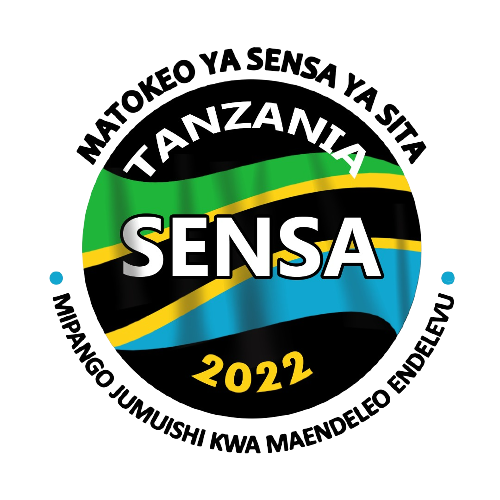Fertilizer Trials and Soil Fertility Evaluation

Tobacco (Nicotiana tabacum L.) plant requires large quantities of macronutrients and trace amount of micronutrients in order to attain high leaf yield and good quality
Introduction
Tobacco (Nicotiana tabacum L.) plant requires large quantities of macronutrients and trace amount of micronutrients in order to attain high leaf yield and good quality. The macronutrients categorized as primary such as nitrogen (N), phosphorus (P), and potassium (K); and secondary macronutrients including sulphur (S), calcium (Ca), and Magnesium (Mg).These macronutrients have significant roles in the tobacco plant, N influences the growth and quality of tobacco, the taste of aroma and the smoke. The nutrient P is essential for hastening tobacco root development, improvement of the colour and quality of leaves. Potassium influences leaf colour, texture, sugar content, nicotine level, and combustibility.Calcium has a strong influence on biomass and dry matter production in the tobacco plant, and it is also involved in the development of cell wall, plasma membrane, cell growth and enzymes secretion. Magnesium is a constituent of the chlorophyll molecule, a co-factor of all enzymes involved in phosphorylation reaction as well as being as an activator of several enzymes such as biphosphate carboxylase in triose sugar production. Sulphur is essential for tobacco growth, development, metabolism and also regulates plant responses to various biological and non-biological stresses. Furthermore, S induces resistance to tobacco mosaic virus (TMV) in correlation with glutathione metabolism.
Micronutrients such as boron (B), copper (Cu), iron (Fe), manganese (Mn) and zinc (Zn) are the essential elements for the production of a good quality leaf in tobacco. These elements are essential in protein metabolism and alkaloid production of tobacco. When B is a deficiency in tobacco plants may affect contents of alkaloids, sugars, organic acids and amino acids. Chlorophyll formation in tobacco is mostly due to Cu. Levels of Cl in tobacco leaf is required to the lowest levels as when increased affects combustibility of tobacco leaf.Photosynthesis in tobacco depends largely on the levels of Fe in soils. Manganese provides disease resistance and is related to chlorophyll formation in tobacco plant. Zincis important in metabolic reactions such as respiration, photosynthesis, and protein synthesis.
Based on the importance of both macronutrients and micronutrients in tobacco plants, TORITA is strictly evaluating and recommending fertilizers to be used in tobacco crop adhering to the specifications indicated below.
1.2 Tobacco Fertilizer Specification in Tanzania
A: NPK (10:18:24 +0. 5Mg0+3Ca0+7S+0.012B) for basal application
N7.1% from NH4
2.9% from NO3
P2O5 18% Minimum
P2O5 solubility in water should be 15.5%
K2O 24% (75% SOP and 25% MOP)
MgO 0.5%
CaO 3%
S 7%
B 0.012%
Cl 6% (120kg/t MOP)
Moisture in weight not exceeding: 1.0%.
NB: Particle size greater or equal to 90% of the material should be through 4mm IS sieve and be retained on 1mm sieve. Less than or equal to 5% should be below 1mm size
B: CAN 27% for top dressing
N 26% min
13% NH4 min
13% NO3 min
MgO 1.7%
CaO 3.0%
S 3.0%
Moisture in weight not exceeding: 1.0%
NB: Particle size greater or equal to 90% of the material should be through 4mm IS sieve and be retained on 1mm sieve. Less than or equal to 5% should be below 1mm size
1.3 Procedures for fertilizer trials/evaluation
Clients wish to import fertilizer products from outside and inside the country for trials/evaluation in tobacco crop, should make sure that they follow all required procedures as stipulated by the Tanzania Fertilizer Regulatory Authority (TFRA), Tanzania Bureau of Standard (TBS) etc. and share with TORITA supporting documents. Before bringing fertilizer product(s) for trials and evaluation, customers should follow the following conditions.
1.Write a request letter to the Research Director, indicating the contents or specifications of the tobacco fertilizer products to be tested. Supporting compliance documents from TFRA, TBS and any other authority as deemed necessary.
2.A client will receive feedback within two weeks after application. Upon request acceptance, a client will be required to submit 50 kg of fertilizer samples followed by provident of a control number to pay fertilizer trials/evaluation fees per fertilizer product in local currency equivalent to US$4000.
3.Upon completion of fertilizer trials/evaluation (takes about 8 months),a certificate will be issued to the customer indicating the status of acceptance or not accepted if the fertilizer will not meet specifications and good results.
2.0 Genomic Soil Fertility Evaluation
2.1 Introduction:
Tobacco is a commercial crop that requires a steady supply of essential nutrient elements directly involved in the nutrition of the plant. Essential nutrient elements supplied by the soil but also through fertilization to complete adequate flow of nutrients for both macronutrients (required in large quantities such as N, P, K, Ca, Mg, S) and micronutrients (required in trace amounts such as B, Cu, Zn, Mn, Mo and Cl).Therefore, soil fertility evaluation is the necessary step to be carried out through TORITA to determine the suitable areas for tobacco production, covering both soil textures and nutritional status. However, recently as the way forward, TORITA has started adopting genomic soil fertility evaluation by including soil microbial community analysis in soil surveys. The use of microbial analysis through DNA extraction is the best way to evaluate soils into different groups, soil fertility and microbial habitat types. Thus soil types with different soil properties and fertility are more likely to have different microbial communities. We understand that genomic soil fertility is very expensive to carry out, but it is imperative, and hence we invite collaboration from various stakeholders to support funding in this vital aspect.
2.2 Procedures for genomic soil fertility evaluation
1.Soil samples from each site taken by the zig-zag method using soil sampler to the depth of 0–30 cm and make a composite soil sample.
2.For soil nutrient analysis, composite soil samples undergo testing for the texture, soil pH and nutrients.
3.For bacteria DNA extraction, 0.25 g of each soil sample will be used for DNA extraction using
Power Soil Kit as per manufacturer’s instructions.
4.Extracted DNA undergo quantified using Qubit™ 3.0 Fluorometer to ensure purification of DNA to the high-quality, and also visualized through 1.0 % agarose gel electrophoresis.
5.Microbiome 16S rRNA sequencing
6.Bioinformatics for microbiota composition


Centrifuge M/C version 8 (Megafuse 8) breaking
down cells for separation of cells
2.3 Procedures for funding genomic soil fertility evaluation
1.Write an intention letter to support genomic soil fertility evaluation to the Research Director indicating coverage scope of your funding with supporting documents.
2.A donor shall receive feedback within three months, and upon meeting all the required financial support conditions, a control number will be sent to the donor to effect payment.
3.Other procedures will be strictly adhered, including sharing genomic soil fertility results and any other agreements as deemed necessary including publications of the findings.


